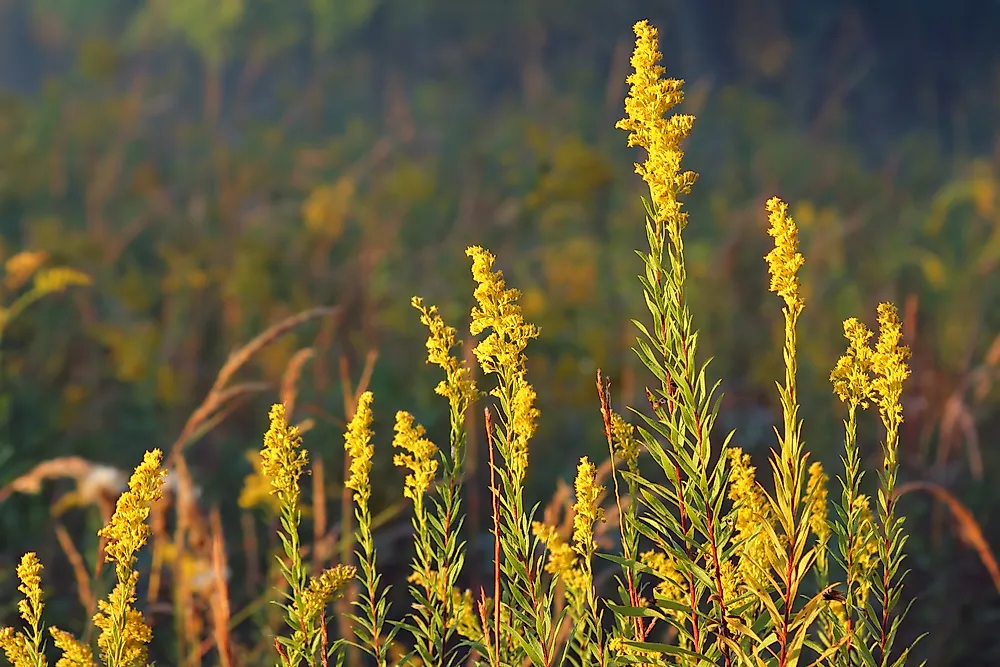What Is The State Flower of Nebraska?

Nebraska is a state located in the Midwestern and Great Plains regions of the United States. The state occupies an area of about 77,000 square miles, has a population of approximately 1.9 million, and its largest city is Omaha. Nebraska is the only triply landlocked American state and is surrounded by Wyoming, South Dakota, Iowa, Missouri, Kansas, and Colorado. In 1867, Nebraska became the thirty-seventh US state and is the only state whose legislature is both nonpartisan and unicameral. Nebraska has numerous official state symbols including a bird (western meadowlark), tree (cottonwood), and insect (honeybee). The state also has an official flower, the goldenrod.
What Is the State Flower of Nebraska?
The state flower of Nebraska is the goldenrod (Solidago gigantea). The goldenrod is described as a wildflower, herb, and weed. The goldenrod was suggested as Nebraska's state flower by L.P. Judd, then representative of Boone County, with the support of Dr. Charles Bessey, renowned botanist from the University of Nebraska. Goldenrods grew abundantly in Nebraska long before Governor Silas Holcomb signed the legislation making it the state flower on April 4, 1895. The flower represents the endurance of the state’s pioneers since it can blossom in sub-optimal environmental conditions and has a long growing season. The flower was spelled in the legislature as "Golden Rod" referring to "Solidago serotina," which is currently known as "Solidago gigantea" (giant goldenrod).
Description of the Goldenrod
The goldenrod is a plant species belonging to the sunflower family (Asteraceae), and its other common names include the giant goldenrod and tall goldenrod. The flower is native to North America and thrives in many non-Arctic parts of the continent. Goldenrods grow in numerous US states including Texas and Florida, Mexico's Nuevo Leon, and the Canadian provinces of Nova Scotia and Alberta. In Nebraska, the flower thrives in pastures and meadows, waste areas, roadsides, ditches and on the edge of the woodlands.
The goldenrod is an herb that can grow to a maximum height of about 80 inches and can spread as underground rhizomes. The plant has several leaves on its stems and every stem produces numerous small flower heads at the top. The heads are yellow with both the ray floret and disc floret. The plant has between 10 to 17 tiny ray florets, while its bract is blunt, green, and firm. These flowers are often grouped in either flattish or elongated clusters on the top edge of the goldenrod’s branches. The Solidago gigantea gets its name from its upper stem or inflorescence, where small bright flowers grow. Its rays attract bees and butterflies, which feed on its nectar while pollinating the plant. The flower blossoms from July until October.
Medicinal Value
The goldenrod has historically been used by numerous indigenous tribes for multiple reasons. These include using the flower to make tea to cure heart conditions, as a painkiller for bee stings, and making ointments from plant extracts to treat muscle pains. Numerous goldenrod species were also chewed to relieve toothaches.











